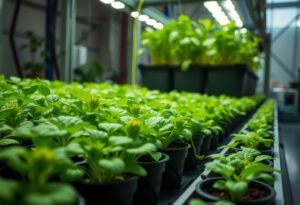Why Transplant Miscanthus?
Transplanting Miscanthus can significantly impact their growth and health. Sometimes these plants may grow too close together or in the wrong location in your garden. Through transplanting, you can provide them with more space to grow, fostering lush development. Miscanthus also serves as a great way to enhance your landscape, adding natural beauty and texture to your surroundings.
What is the Best Time for Transplanting?
The optimal time for transplanting Miscanthus is early spring or late fall. During these times, the plants are less susceptible to the stress of being moved. Early spring is when the plants start to awaken from their winter dormancy. Late fall, on the other hand, allows them to adjust peacefully before the onset of winter.
How to Prepare Miscanthus for Transplanting?
Preparing Miscanthus for transplanting is crucial. Before you start, ensure they are placed in a suitable location—sunny with well-draining soil. Before transplanting, trim off any dead leaves, easing the process of relocation. It’s a good idea to water the plants thoroughly a day before you transplant, making the roots more pliable.
Steps for Transplanting Miscanthus
Transplanting Miscanthus is not complicated if you follow a few basic steps. First, choose a new spot that meets their sun and soil requirements. Next, dig up the plants while trying to keep as many roots intact as possible. Then transfer the Miscanthus to the new hole, ensuring they are not planted too deeply. Finally, thoroughly water the new plantings to aid in their adjustment.
How to Care for Newly Transplanted Miscanthus?
After transplanting, Miscanthus needs special care to thrive. Providing regular watering during the first weeks is extremely important. Additionally, investing in nutrient-rich fertilizers will speed up their recovery. Watch the plants closely and respond to their needs; they may require extra protection from sun or wind during their initial phase in the new location.
Avoiding Common Mistakes When Transplanting Miscanthus
Many gardeners make mistakes when transplanting Miscanthus that could negatively affect their growth. Avoid transplanting plants in extreme heat or when they are stressed, such as after long dry spells. Furthermore, don’t plant them too close together to prevent restricting air and light access.
Conclusion
Transplanting Miscanthus is a process that can yield benefits regardless of your gardening experience. Following the guidelines above will help you create a space filled with harmony and beauty. Remember, proper timing and preparation are keys to success. Are you ready to make changes in your garden and transplant Miscanthus? Don’t wait, take action!
Disclaimer
All information within this article is for informational purposes only and does not constitute gardening advice. It is recommended to consult an expert before making decisions.

















